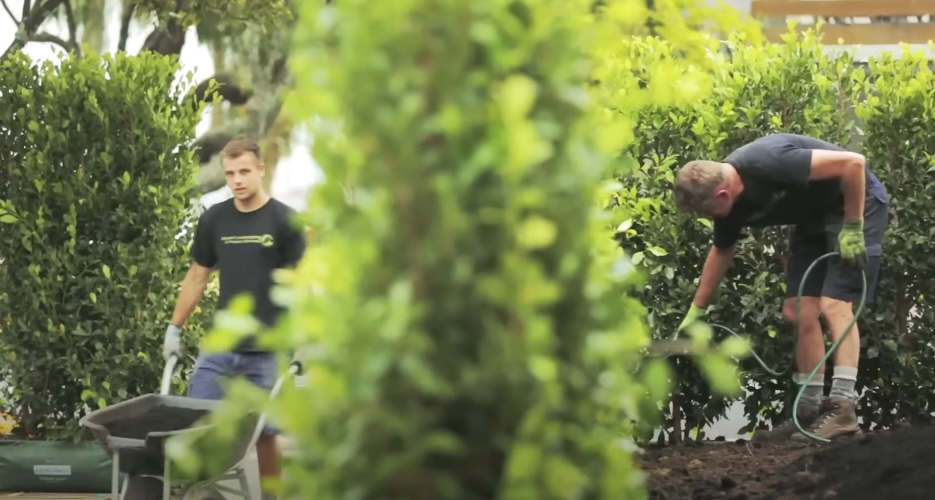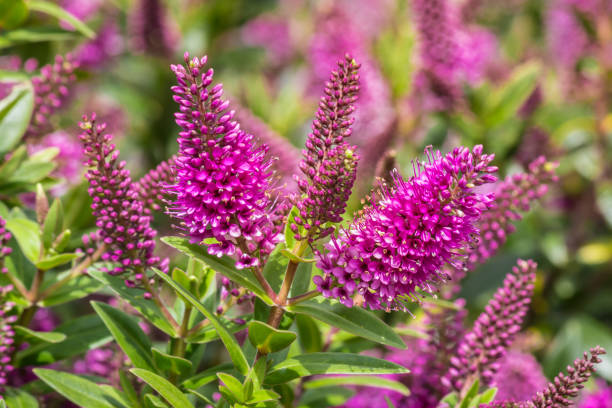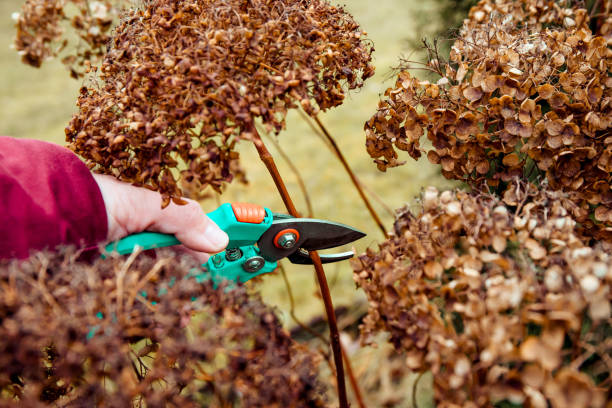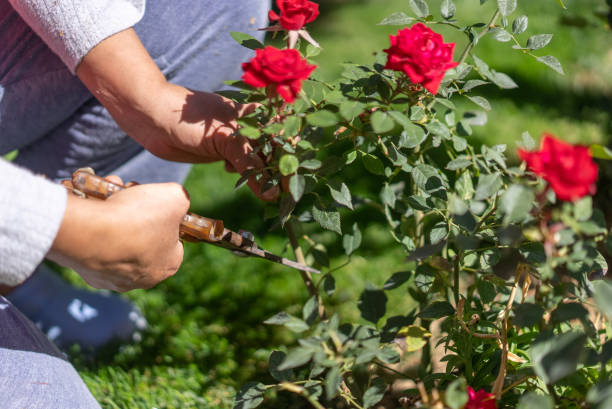If you are considering using Ficus Tuffi to create a thick and verdant hedge, there are some drawbacks that should be taken into account. Despite its reputation for rapid growth and full leaves, this plant poses certain difficulties unique to its species. In this article, we will delve into frequent issues encountered while cultivating a Ficus Tuffi hedge as well as supply useful instructional resources aimed at achieving an energetic and robust stand of foliage.
Common Ficus Tuffi Hedge Problems
Favored for their thick leaves and capacity to form organic partitions, Ficus Tuffi hedges remain a sought-after plant. Nevertheless, these plants may encounter several ailments that can compromise their well-being and visual appeal. Familiarizing oneself with such issues and how to manage them is crucial in preserving vigorous fecundity of the Ficus Tuffi hedge.
Pest Infestations
One of the primary concerns for Ficus Tuffi hedges is pest infestation. Several pests can target these hedges, including:
| Pest | Description |
| Scale Insects | Attached to the leaves and stems, these minuscule pests extract sap resulting in yellowing and wilting. |
| Spider Mites | The leaves exhibit a stippled appearance due to feeding by tiny pests on the plant’s tissues. |
| Aphids | The plant is weakened by small insects that feed on its sap, causing growth to be stunted and distorted. |
Solutions:
- Regular Inspection: Schedule regular inspections for your Ficus Tuffi hedge to check for indications of pests, including discoloration, webbing or insect infestation.
- Treatment: To effectively manage infestations, resort to insecticidal soap or neem oil treatment. Alternatively, you can introduce beneficial insects like ladybugs for natural control of pest populations.
Fungal Diseases
There is another notable danger faced by Ficus Tuffi hedges from fungal diseases. Examples of the most frequently occurring fungus-related illnesses include:
| Disease | Description |
| Leaf Spot | The formation of tiny, black marks on the leaves can result in their premature shedding when they combine and merge. |
| Powdery Mildew | It manifests as a white powder on the leaves, hindering photosynthesis. |
| Root Rot | Root decay and eventual hedge death are caused by excessive watering. |
Solutions:
- Air Circulation: To guarantee adequate air flow for the hedge, trim any vegetation around it and prevent overgrowth.
- Watering Practices: To minimize moisture on the leaves that can lead to fungal growth, it is advisable to water at the base of plants instead of using overhead watering techniques.
- Fungicides: As a final measure to address severe fungal infections, carefully abide by label directions when employing fungicides.
Nutrient Deficiencies
Nutrient deficiencies can adversely affect the health and growth of Ficus Tuffi hedges. Common deficiencies include:
| Nutrient | Symptoms |
| Nitrogen | Yellowing leaves, stunted growth. |
| Iron | Chlorosis, where leaves turn yellow but veins remain green. |
| Magnesium | Interveinal chlorosis, yellowing between leaf veins. |
Solutions:
- Soil Testing: Conduct a soil test to assess nutrient levels accurately and identify deficiencies.
- Fertilization: Apply a balanced fertilizer containing nitrogen, iron, and magnesium to address specific deficiencies. Follow recommended application rates.
- Organic Matter: Incorporate organic matter such as compost into the soil to improve overall fertility and nutrient availability.
Growing Guides for Ficus Tuffi Hedge

Proper care and maintenance are essential for cultivating a healthy and thriving Ficus Tuffi hedge. By following these detailed growing guides, you can ensure successful growth while minimizing the risk of common problems.
Planting
To establish a robust Ficus Tuffi hedge, follow these steps for proper planting:
- Select the Right Location: Choose a location with well-drained soil and ample sunlight exposure. Ficus Tuffi hedges thrive in full to partial sunlight.
- Prepare the Soil: Prior to planting, loosen the soil to a depth of at least 12 inches. Incorporate organic matter such as compost or aged manure to improve soil structure and fertility.
- Spacing: Space Ficus Tuffi saplings 3-4 feet apart to allow for adequate air circulation and growth room.
- Planting Depth: Dig a hole that is twice the width of the root ball and deep enough so that the top of the root ball is level with the ground surface.
- Watering: After planting, water the newly installed saplings thoroughly to settle the soil around the roots and provide initial moisture.
Watering
Proper watering practices are crucial for the health and vitality of your Ficus Tuffi hedge:
- Frequency: Water young plants deeply once a week during the growing season. Established plants can be watered every 10-14 days, depending on weather conditions and soil moisture levels.
- Method: Utilize a soaker hose or drip irrigation system to deliver water directly to the base of the plants. Avoid wetting the foliage to minimize the risk of fungal diseases.
- Monitoring: Regularly check the soil moisture levels to ensure it remains consistently moist but not waterlogged. Adjust watering frequency as needed based on environmental factors.
Pruning
Regular pruning is essential for shaping and maintaining the health of your Ficus Tuffi hedge:
- Timing: Prune your hedge in late winter or early spring before new growth emerges. This timing encourages vigorous regrowth and helps maintain the desired shape.
- Tools: Use sharp and clean pruning shears to make precise cuts. This reduces the risk of tearing or injuring the plant tissue.
- Technique: Start by removing any dead, damaged, or diseased branches. Then, trim the hedge to the desired shape, cutting back to a healthy bud or lateral branch to promote branching and density.
Fertilizing
Proper fertilization is essential for preventing nutrient deficiencies and promoting healthy growth:
- Type: Use a balanced, slow-release fertilizer formulated for shrubs and hedges.
- Frequency: Apply fertilizer in early spring before the start of the growing season and again in mid-summer to support sustained growth.
- Amount: Follow the manufacturer’s instructions regarding the recommended dosage. Avoid over-fertilization, as this can lead to nutrient imbalances and other issues.
Mulching
Mulching helps conserve soil moisture and suppress weeds around your Ficus Tuffi hedge:
- Material: Choose organic mulch such as bark chips, shredded leaves, or compost. Organic mulches gradually break down, enriching the soil with organic matter.
- Depth: Apply a 2-3 inch layer of mulch around the base of the plants, taking care to keep it several inches away from the stems to prevent stem rot and other moisture-related issues.
Preventive Measures for Ficus Tuffi Hedge Problems

Ficus Tuffi hedges, prized for their lush green foliage and dense growth habit, can be susceptible to various issues such as pests, diseases, and nutrient deficiencies. Employing preventive measures is key to maintaining the health and vigor of your hedge. Here are some effective strategies:
Regular Inspections
Regularly inspecting your Ficus Tuffi hedge allows you to identify and address problems early on. Follow these guidelines:
- Frequency: Conduct inspections at least once a week to promptly detect any issues.
- What to Look For: Pay attention to signs of pests, diseases, and nutrient deficiencies such as yellowing leaves, leaf spots, or stunted growth.
- Action: Take prompt action to address any problems identified during inspections. This may include pruning affected branches, applying appropriate treatments, or adjusting soil fertility.
Proper Sanitation
Maintaining proper sanitation practices helps prevent the spread of diseases and pests within your Ficus Tuffi hedge. Here’s what you should do:
- Cleaning Tools: Clean and disinfect pruning tools before and after each use to prevent the transmission of pathogens between plants.
- Removing Debris: Regularly remove fallen leaves, branches, and other debris from around the hedge. Accumulated debris can harbor pests and promote the development of fungal diseases.
- Proper Disposal: Dispose of diseased plant material in a responsible manner to prevent the spread of pathogens. Avoid composting diseased plant debris, as it may not reach a high enough temperature to kill pathogens. Instead, bag and discard it with household waste.
Soil Management
Maintaining healthy soil is essential for the overall health and vitality of your Ficus Tuffi hedge. Follow these soil management practices:
- Testing: Conduct regular soil tests to assess nutrient levels and pH. Soil testing kits are readily available and can provide valuable insights into your soil’s composition.
- Amending: Based on soil test results, amend the soil as needed to improve its structure and fertility. Incorporating organic matter such as compost or well-rotted manure can enhance soil health and promote robust plant growth.
- pH Levels: Aim to maintain a soil pH between 6.0 and 7.5, as Ficus Tuffi hedges thrive in slightly acidic to neutral soils. Adjust soil pH as necessary using amendments such as lime or sulfur.
Water Management
Proper water management is critical for preventing issues related to overwatering or underwatering. Follow these guidelines for effective water management:
- Irrigation System: Install a drip irrigation system to deliver water directly to the root zone of your Ficus Tuffi hedge. Drip irrigation ensures efficient water use and helps prevent foliage diseases caused by overhead watering.
- Monitoring: Regularly monitor soil moisture levels using a soil moisture meter. This allows you to determine when your hedge requires watering and helps prevent both drought stress and waterlogging.
- Adjusting: Adjust your watering frequency based on weather conditions, season, and soil moisture levels. During hot, dry periods, your hedge may require more frequent watering, while reduced watering may be necessary during cooler, wetter periods.
Conclusion
By following these guidelines and addressing Ficus Tuffi hedge problems promptly, you can enjoy a healthy, vibrant, and attractive hedge in your garden. Regular maintenance and preventive measures will go a long way in ensuring your Ficus
FAQ
The most common Ficus Tuffi hedge problems include pest infestations (such as scale insects, spider mites, and aphids), fungal diseases (such as leaf spot, powdery mildew, and root rot), and nutrient deficiencies (such as nitrogen, iron, and magnesium deficiencies).
To prevent pest infestations, regularly inspect your hedge, use insecticidal soap or neem oil to treat infestations, and introduce beneficial insects like ladybugs to control pest populations naturally.
Conduct a soil test to determine nutrient levels and apply a balanced fertilizer to address deficiencies. Use organic matter like compost to improve soil fertility.
Water young plants deeply once a week and established plants every 10-14 days. Use a soaker hose or drip irrigation to water the base of the plants, avoiding wetting the foliage.
Prune your Ficus Tuffi hedge in late winter or early spring before new growth begins. Use sharp, clean pruning shears to make clean cuts and remove dead or diseased branches first.




